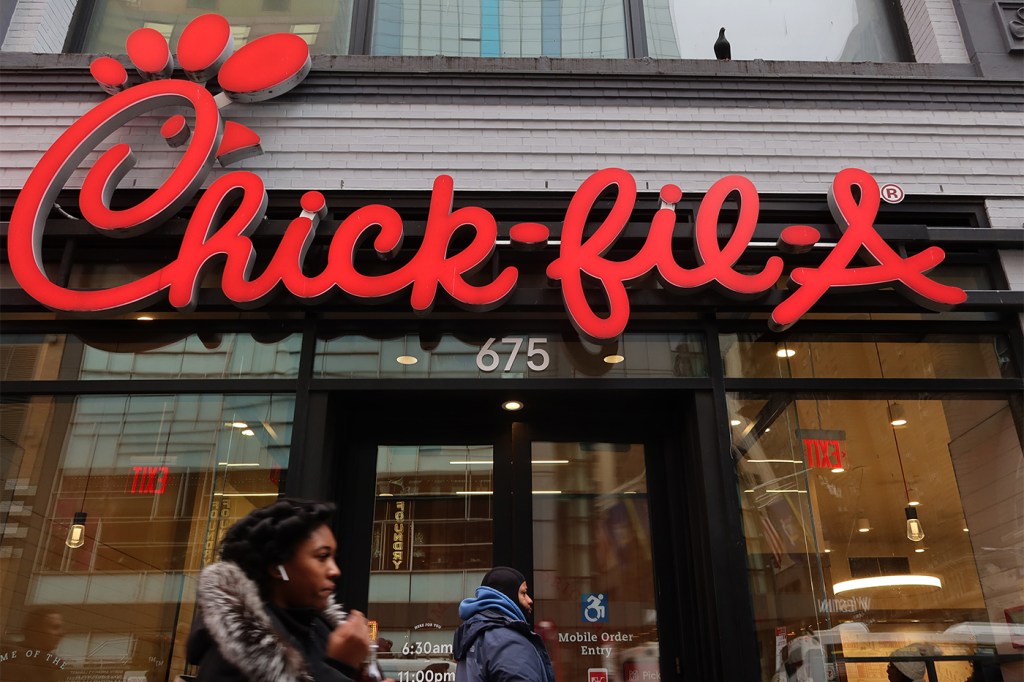Chick-fil-A is putting antibiotics back in its chicken. What does that mean for consumers?
The popular fast food chain’s decision to start using antibiotics on its chickens again sets a dangerous precedent for consumers and the industry, says a Northeastern food safety expert.

Since 2014, Chick-fil-A has promised its chicken would be antibiotic-free, but this spring the popular fast food chain will start serving chicken that may have antibiotics in it.
Following in the footsteps of Tyson, Chick-fil-A will move from the “No Antibiotics Ever” health standard to “No Antibiotics Important to Human Medicine.” Under that category, the chain says it will only use antibiotics to treat sick animals and never use antibiotics that are commonly used for treating human illness.
For years, Chick-fil-A was the biggest name in fast food to come out in support of moving away from antibiotics. This recent change is a major blow to consumers’ fight against antibiotics in their food, says Darin Detwiler, an associate teaching professor at Northeastern University who has decades of experience shaping federal food policy.
“I believe that this week we lost that activist voice in this battle in terms of antibiotics in our food, not just in chicken, not just in Chick-fil-A or fast food but in food,” Detwiler says. “The ‘Chick’ in Chick-fil-A is the first word. It’s not Joe’s Restaurant, and they happen to serve chicken. It’s Chick-fil-A … and now they’re literally changing the definition of what chicken means in their restaurants.”

The use of antibiotics in food has been a thorny issue for more than a decade, for good reason, Detwiler says.
Antibiotics are invaluable for treating sickness in animals; however, livestock producers have also long used growth-promoting antibiotics to make animals rapidly increase weight, making them more profitable. Animals treated with antibiotics run the risk of spreading antibiotic-resistant bacteria, like Salmonella, to humans, according to the Centers for Disease Control and Prevention. In the World Health Organization’s recommendation to farmers to stop using antibiotics, the organization cited concerns that “some types of bacteria that cause serious infections in humans have already developed resistance to most or all of the available treatments, and there are very few promising options in the research pipeline.”
“The concern is the antibiotics that end up getting into the human body, but also, quite honestly, it’s not just directly into the human body,” Detwiler says. “It’s also the [antibiotics] that get into wastewater and then wastewater that gets treated and then gets into soils.”
Detwiler says these impacts are more severe among children and young people with still-developing immune systems and bodies.
Featured Posts
“If you’re a 93-year-old and you’re eating [Chick-fil-A], it might not be the same as if you’re a 2- or 3-year-old,” Detwiler says. “Will the average healthy adult be impacted by this? Maybe not so much as the next generation of children that are going to grow up eating this.”
Detwiler is concerned Chick-fil-A’s policy reversal could set a dangerous precedent for other food companies to follow and leaves wiggle room for the use of antibiotics in a way that the NAE standard didn’t. Part of the problem is how antibiotics are administered in the poultry industry, he says.
“Part of the concern has been they say, ‘We only give antibiotics to animals when they need it,’ but the evidence has shown that it’s too difficult and expensive to go and check every chicken, see if they actually need it and administer it to them,” Detwiler says. “What’s been the practice? Just put it in the feed and feed it to all of them every day.”
Chick-fil-A cited concerns about the supply of antibiotic-free chicken when making its decision, according to the Associated Press. The National Chicken Council estimates that more than 50% of chicken production is done without any antibiotics.
“They’re saying that the availability of the supply is not there; it is there, apparently,” Detwiler says. “It’s just the availability at the price point they’re willing to pay is not there to maintain their profit margins. When they’re trying to defend their actions, they’re not talking about science and medicine and health. They’re talking about supply and demand.”
At a time when consumer boycotts against big companies are mobilizing faster and faster over social media, will consumers push back against Chick-fil-A? Potentially, given other recent examples in the fast food industry. But there are bigger concerns than Chick-fil-A’s bottom line, Detwiler says.
“There will be an economic fluctuation, but I’m pretty confident that Chick-fil-A will, in the long run, recover,” Detwiler says. “But I don’t think the movement against antibiotics in food will recover because we’ve lost this ally. It’ll be a while, if it does recover.”











